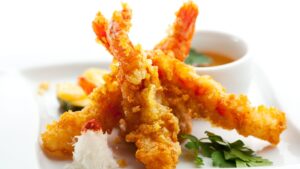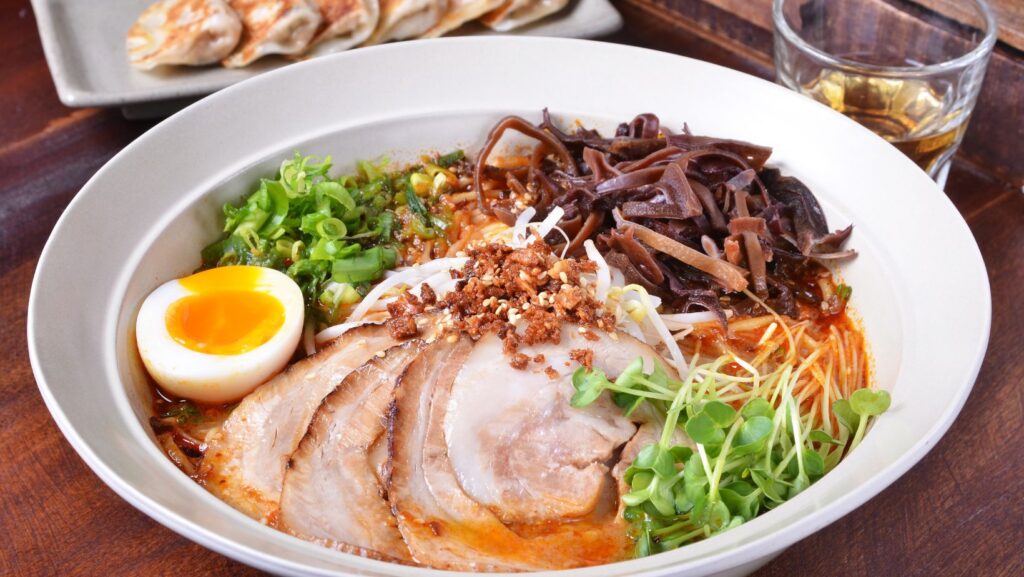When the chill of winter creeps in, or when you’re just having one of those days, there’s nothing like comfort food to soothe the soul. Now, let’s take a culinary journey to the Land of the Rising Sun. Japan, a country renowned for its unique and delectable cuisine, boasts an array of comfort foods that warm not only the body but also the spirit.
From the heartwarming bowls of ramen to the crispy, savory goodness of tempura, Japanese comfort foods offer a diverse range of flavors and textures. They’re a testament to Japan’s culinary heritage, blending tradition with innovation in every bite.
Japanese Comfort Foods
 Diving deeper into the realm of Japanese comfort food, we encounter elements that form its foundation: the influence of seasons and weather, and the cultural significance. These factors contribute to the uniqueness of Japan’s comfort food traditions.
Diving deeper into the realm of Japanese comfort food, we encounter elements that form its foundation: the influence of seasons and weather, and the cultural significance. These factors contribute to the uniqueness of Japan’s comfort food traditions.
In Japan, I find comfort food greatly influenced by the changing seasons and weather conditions. Winter elicits hearty, warm dishes like hot pots (nabe) and ramen. Summer, on the contrary, brings cooling treats such as zaru soba, served cold with a flavorful dipping sauce.
It’s no wonder that every season presents its specific comfort food, bearing testament to Japanese cuisine’s versatility and adaptiveness. Fruits like mikan (Japanese tangerines), for instance, in winters offer not just warmth, but also a missing piece of the cultural puzzle.
Significance of Comfort Food in Japanese Culture
Comfort food goes beyond taste and satisfaction in Japan; it demonstrates a deep-seated aspect of Japanese culture. Meals, like Osechi-ryori (traditional New Year’s meal), serve more than nutritional needs—they function as profound symbols of seasonality, celebrations, and cognition of time passing by.
Popular Japanese Comfort Foods and Their Origins
 Venturing into the heart of Japan’s culinary landscape reveals several comfort foods latched onto the country’s cultural history. Let’s embark on a savory tour of some beloved Japanese dishes, unearthing their historical roots.
Venturing into the heart of Japan’s culinary landscape reveals several comfort foods latched onto the country’s cultural history. Let’s embark on a savory tour of some beloved Japanese dishes, unearthing their historical roots.
Ramen: A Street Food Hero
In Japanese cuisine, Ramen stands tall as a legend born on the bustling streets. Originating from China in the late 19th century, it’s pizza and burgers for Japan. A dish with soupy noodles, it comes in four primary variations: Shoyu (soy sauce), Miso (soybean paste), Tonkotsu (pork bone broth), and Shio (salt). It’s a widespread dish, relished in humble food stalls to high-end restaurants, bonding people through their shared love.
Onigiri: Rice Ball Delicacy
Onigiri, or rice ball, is famed as a ‘portable wonder’, wrapping the essence of Japanese cuisine. It took shaped during the Nara period (710-794 BCE) and popularized amid samurais as a quick meal during wars. A hand-molded triangle of rice packed with fillings like pickled plum or salmon echoes the simplicity and beauty of Japan’s cuisine. Compact and nutritional, Onigiri accompanied the Japanese through decades of transformation.
Takoyaki: Irresistible Octopus Balls
 Ensconced amidst Japan’s culinary icons, Takoyaki offers a mouthful of Osaka’s culture. These octopus balls burst onto the scene in 1935, and the credit goes to a street vendor named Tomekichi Endo. Fondly called ‘Osaka’s soul food’, Takoyaki whirls together diced octopus, tempura scraps, and pickled ginger into a ball of delight. Despite its humble beginnings, it’s now a global sensation, urging people’s palates to revel in its unique flavors.
Ensconced amidst Japan’s culinary icons, Takoyaki offers a mouthful of Osaka’s culture. These octopus balls burst onto the scene in 1935, and the credit goes to a street vendor named Tomekichi Endo. Fondly called ‘Osaka’s soul food’, Takoyaki whirls together diced octopus, tempura scraps, and pickled ginger into a ball of delight. Despite its humble beginnings, it’s now a global sensation, urging people’s palates to revel in its unique flavors.
Japanese Comfort Food: Effects on Mental Health
In this part of our culinary journey through Japan, we’ll investigate how these treasured comfort foods can influence our mental well-being..
Comfort Foods and the Feeling of Nostalgia
When we tuck into traditional Japanese comfort foods, an aspect of nostalgia comes into play. These dishes, drawn from thousands of years of Japanese culture and history, can awaken vivid memories. Think of biting into an Onigiri rice ball. It’s just a simple dish, combining rice, seaweed, and typically a hearty filling of fish or pickled umeboshi. But, if you’ve grown up eating Onigiri, that taste can transport you back to your childhood days. That feeling, known as ‘Natsukashii’ in Japanese, embodies a warm, yearning sentiment for a past time or place, stirring up a sense of comfort and mental warmth.



